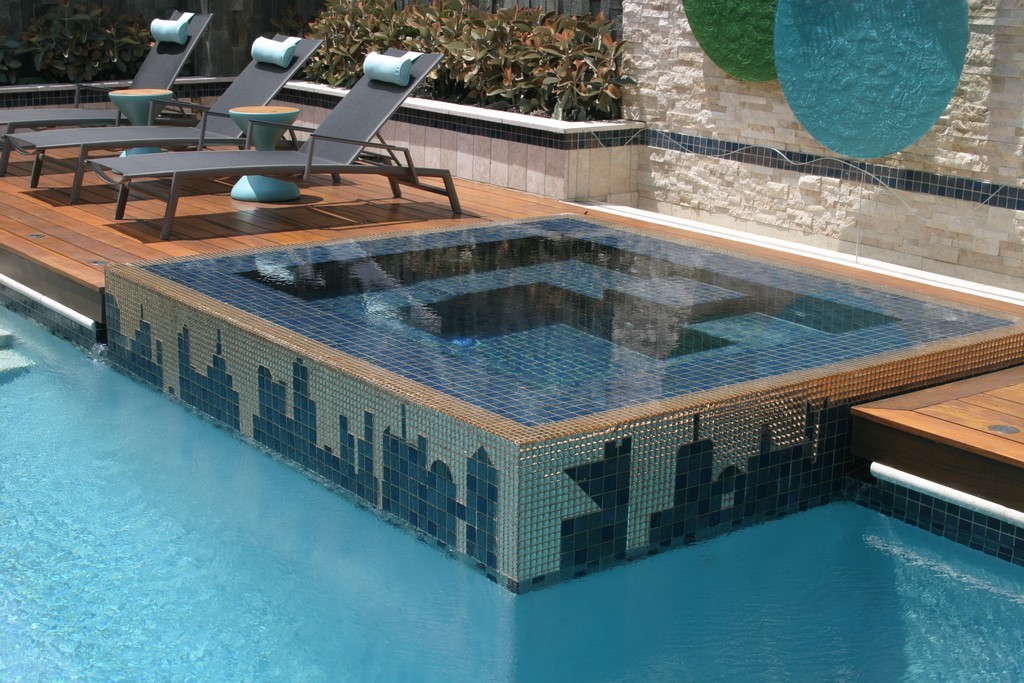Interventions


In March 2017, a former employee at Ten Thousand Waves, a Japanese-style spa and resort in Santa Fe, N.M., filed a lawsuit against the company for having exposed him to airborne bacteria that resulted in his contracting a respiratory condition known as Hot Tub Lung.
I hate seeing news items like that one – or this one: Linda Godsey, a 62-year-old woman, died in October 2017 of Legionnaires’ disease, and her family has filed a wrongful-death suit against a hotel in which she’d stayed and where she was reportedly in and out of the pool and hot tub quite frequently.
How do we achieve the sort of advanced filtration and sanitization required to mitigate these problems? As I outlined in Part 1 of this series of articles (click here), it is my belief that it involves creatively applying to pools and spas the same perfected processes observed in the human body, an encapsulated vessel of liquid (blood) with a pump (heart), filters (kidneys), pH-regulating systems, balancing mechanisms for electric currents and automatic backwash functions.
This is a line of thinking to which I’ve been deeply committed for more than 25 years, and it’s led to me define a range of approaches and combinations of strategies that have proved useful in giving my clients the toxin-free pool experience they crave.
TRACKING ANALOGIES
As I see it, the human body and nature carry the master blueprints we should follow in pool design and engineering because of the strength of the parallels between our bodies’ micro/internal universe and our pools’ macro/external universe.
Start by comparing, for example, the functions of pool filter grids or sand beds to the functions of our gastrointestinal tracts with their 27 feet of intestines: Both are dedicated, full time, to getting rid of unfriendly intruders. If your gut biome isn’t in good condition, you cannot stay healthy – and the same is true for a pool with a busted filter.
I’ve been exploring this and other body/pool analogies since the 1980s, when I started to understand that pH is essentially a reading of voltage; that processing water in a pool is roughly similar to processing blood in our bodies; and that nature works through waves, frequencies and forms of electrical currents found in our bodies and our watershapes. The universe, in other words, is set up for life, and its physical processes work just about everywhere as a set of balancing, regulatory forces.
 I don’t want to get lost in the science behind all of this, but, briefly, there’s aphysicscomponent: Healthy pool water really does have to do with electricity, magnetism, light and radioactivity – underlying forces that we’ve only begun understanding and using in the past 100 years or so.
I don’t want to get lost in the science behind all of this, but, briefly, there’s aphysicscomponent: Healthy pool water really does have to do with electricity, magnetism, light and radioactivity – underlying forces that we’ve only begun understanding and using in the past 100 years or so.
There’s also biology: Our cells are 73 percent water and the human body carries about a trillion bugs that get active when low-oxygen environments develop in our blood and cells. Now think of a stagnant pool: The lower the oxygen content, the faster algae, microbes, anaerobic bacteria and destructive water-born infestations will take hold.
And physiology, too: Cells in the human body operate at about 70 millivolts, but when there’s an injury, that level rises, increasing oxygen levels and boosting alkalinity. On the flip side, when the body’s operating level falls to as low as 30 millivolts, sicknesses including cancer can intrude as oxygen levels decline and acidity increases. This is why, in emergency rooms, attending physicians will often immediately administer sodium bicarbonate intravenously, shifting acidic pH to the alkaline side and raising the voltage passing through tissues and cells throughout the whole body to help it heal.
 If that last part sounds familiar to watershaping professionals, it’s because the analogy to pools and spas is so direct. We all worry about pH levels, oxidation reduction potential (measured in millivolts) and management of alkalinity and acidity in all of our projects, doing everything we can to keep these systems healthily balanced.
If that last part sounds familiar to watershaping professionals, it’s because the analogy to pools and spas is so direct. We all worry about pH levels, oxidation reduction potential (measured in millivolts) and management of alkalinity and acidity in all of our projects, doing everything we can to keep these systems healthily balanced.
So let’s assume and accept that oxygen chemistry in the atmosphere, in a cell and in a decontamination process are similar. It takes me back to childhood and my experiences in the mineralized, alkaline waters of hot springs and oceans: Those waters are electrified with healthy currents and provide stimulating, optimal environments.
Now consider Clostridium botulinum, a murderous toxin that thrives in the absence of air or oxygen and releases spores that cause botulism. These spores will survive even boiling water, but when salt and other minerals are introduced at low concentrations, C. botulinum slows in growth and stops producing spores. Oceans and hot springs are healthy for us, deadly for C. botulinum. More important to my research, facts like these started unrolling nature’s decontamination blueprint for me.
Beyond the hair-color and itchy-eye issues I noticed as a child, it’s evident that numerous other problems arise when chlorine-treated pool water moves out of balance. Dentists, for example, have observed excessive erosion of tooth enamel, with epidemiological studies indicating that members of swim teams – that is, people who spend unusually large amounts of time in chlorinated pool water – are particularly susceptible to this form of decay.
There’s trouble as well when pH moves out of balance: More than 100 million people in the United States live with various types of diabetes, many of which can be traced to pH imbalances brought on by a lack of exercise exacerbated by acidic diets consisting too largely of highly processed foods. It didn’t take much more than that to convince me that, just as proper pH in the human body is crucial to health, the same is true with pools and spas.
REVISED THINKING
In nature, water is purified as it passes and tumbles over rocks, thereby becoming aerated (increased oxygen content) and coming in contact with minerals (increased electrical activity) while passing through sunlight (ultraviolet disinfection), which creates sanitizing hydroxyl free radicals. It’s an elegant, efficient system that works better than chlorine oxidation.
Think about a rushing, whitewater river streaming down from forested mountains, with their frozen, distilled-water snow packs: You know this water is very pure and oxygen rich. Now consider all of the people these days who want their food to be gluten free, without processed sugars, sprouted first, low sodium and/or containing no-cholesterol fats: These are all substantiated, scientific, beneficial trends that are entwined in our evolving dietary habits. There’s a mirror here, a direct relationship between water purification trends 9(the pursuit of toxin-free pools) and our digestive systems and the way we now look at gluten (glue), pasta (paste), processed sugars (acids), non-soluble fats (cholesterol) and high levels of sodium (insoluble minerals).
 With the ingestion of foods in any of these categories, the flowing mountain stream of our blood vessels and arteries begins to stagnate and develop pockets of fatty plaques that harden and foster all the bad actors that come with low-oxygen conditions. By analogy, the same basic process occurs with pools and spas and underscores the importance of the proper functioning of hydraulics and plumbing in our mechanical water systems.
With the ingestion of foods in any of these categories, the flowing mountain stream of our blood vessels and arteries begins to stagnate and develop pockets of fatty plaques that harden and foster all the bad actors that come with low-oxygen conditions. By analogy, the same basic process occurs with pools and spas and underscores the importance of the proper functioning of hydraulics and plumbing in our mechanical water systems.
When I was six years old, I watched my father attaching wallpaper using a paste he’d made from white flour and water. I was puzzled then because my common sense told me that food isn’t glue, but now I know that white flour is, in fact, a fluid inhibitor that can have negative effects on the body’s circulatory system. It doesn’t take much to see a link between flour and the gunk that impedes flow in pool systems and causes plaque-like scale formations when pH is high and flow is inefficient.
Epidemiologists say that Legionnaires’ disease and even tuberculosis emerge from spas afflicted in this way. Just as low-circulation issues cause multiple types of problems in our bodies and create unhealthy situations for us, poorly disinfected, inefficiently circulating pools and spas can bite us, and hard.
 So here we are, relying on chlorine to kill microbes and bacteria in our pools: Yes, it works on some of these hostile entities, but not on all of them. And what about heavy metals, pesticides, nitrates, cosmetics, dissolved suntan oils, chemical products, human secretions, chloramines, organic chlorides, cyanuric acid and other dissolved materials? The list of substances being found in pool water grows daily, and few people recognize just how limited chlorine really is as a purifying agent.
So here we are, relying on chlorine to kill microbes and bacteria in our pools: Yes, it works on some of these hostile entities, but not on all of them. And what about heavy metals, pesticides, nitrates, cosmetics, dissolved suntan oils, chemical products, human secretions, chloramines, organic chlorides, cyanuric acid and other dissolved materials? The list of substances being found in pool water grows daily, and few people recognize just how limited chlorine really is as a purifying agent.
Partly, it’s because the chlorine-processing industry is quite effective in keeping attention off of its prized commodity and will go to great lengths to protect its markets. In fact, one such organization threatened the supplier of a component in my toxin-free system with multiple lawsuits and forced the company to replace the word “chlorine” with the term “harsh chemicals” in descriptions of the benefits of its non-chlorinated approach to water treatment.
You wouldn’t think anyone would care all that much about what happens with swimming pools and spas, but just as the medical establishment has so often resisted new approaches and technologies that threaten sales of pharmaceuticals and medical equipment, there are indeed marketplace interests in the pool industry that don’t want change and certainly aren’t encouraging development of alternatives that would take chlorine suppliers’ products out of hundreds of thousands of backyards and commercial aquatic facilities.
CONCEPTUAL CRESCENDO
Emerging concern about the excessive presence of chlorine in our lives is why it’s so frustrating to read that the U.S. Environmental Protection Agency has issued warnings about unacceptable dioxin levels in ordinary, chlorine-bleached white coffee filters – all while consumers are exposed to higher concentrations of chlorine and its byproducts in swimming pools and spas and no action of any kind has ever been taken.
Happily, pregnant women merit some sort of defense. According to the U.S. government, “Swimming is popular among pregnant women because it can ease pregnancy symptoms while helping them maintain their muscle strength and relieve weight-bearing strain on the lower extremities.”
 But, the article goes on, “expectant mothers who swim in chlorinated pools can actually harm their fetuses due to the toxic chemicals like chloroform, formed by a chemical reaction between chlorine and organic matter.” In England, this report led to a movement to reduce the chlorine content of swimming pool water; no similar movement has caught on in the country where the research occurred despite the fact all swimmers would be helped, not just pregnant women and their unborn children.
But, the article goes on, “expectant mothers who swim in chlorinated pools can actually harm their fetuses due to the toxic chemicals like chloroform, formed by a chemical reaction between chlorine and organic matter.” In England, this report led to a movement to reduce the chlorine content of swimming pool water; no similar movement has caught on in the country where the research occurred despite the fact all swimmers would be helped, not just pregnant women and their unborn children.
The list of concerns goes on: Again in this country, the Centers for Disease Control have studied asthma and respiratory diseases such as epiglottitis, which is a potentially life-threatening inflammatory condition of the cartridge that covers the windpipe. Swallowing too much chlorinated water, they observed, can lead to liver and kidney problems, while sodium hypochlorite found in chlorine and other compounds has the potential to produce liver cancer.
It all boils down to one simple idea: We need water to flush toxins, not to be full of them! Who wouldn’t want to swim in drinking-water-quality pool water, especially when you consider the fact, discussed below, that we literally drink the water we’re swimming in right through our skin?
 Decades ago, the allowable arsenic level in drinking water was 50 parts per billion. Experts declared this to be unsafe, so the limit was cut to 10 ppb. Why not to zero? It had much to do with existing infrastructure and the cost of making so total a change. Similar compromises have occurred with trimethyl halogens, tetrahydrofuran and bisphenol A despite growing demand from water-consuming citizens who want to live toxin-free.
Decades ago, the allowable arsenic level in drinking water was 50 parts per billion. Experts declared this to be unsafe, so the limit was cut to 10 ppb. Why not to zero? It had much to do with existing infrastructure and the cost of making so total a change. Similar compromises have occurred with trimethyl halogens, tetrahydrofuran and bisphenol A despite growing demand from water-consuming citizens who want to live toxin-free.
And then there’s this: In September 2017, Jim Lauria wrote in Aqua about a 2005 article I recall seeing which declared that up to 85 percent of the chlorine used in a spa without any other water sanitizer is consumed – literally blown away – in the process of oxidation. There was also a 2004 report from an environmental working group that discussed how personal care products were combining with sloughed-off skin cells, hair and oils to form scum, scale and biofilms capable of shielding pathogens from disinfectants.
In October 2017, Aqua quoted Dr. James Amburgey, a former CDC employee and associate professor of civil and environmental engineering at the University of North Carolina in Charlotte as follows: “[I]f you’ve got a 1,000 gallon pool and you filter 1,000 gallons from the pool, theoretically you’ve filtered the pool one time. But in reality you’ve only turned over 63 percent of the volume. That’s because you take some water out and put some back in for every cycle and it all mixes.”
To get all of the water filtered therefore takes about seven turnovers. In short, you have a recirculation system that’s only getting 63 percent of the water to the filter and a filter that’s only removing 25 percent of the small particles from that 63 percent. This is what I’d call “low treatment efficiency.”
BUILT-IN EFFICIENCY
As a result of years of reading reports such as those mentioned just above, I have continued my research while installing systems that represent my best understanding of toxin-free solutions and of the overall need for system efficiency.
That’s why, early on, I was so impressed by ozone, an effective, highly efficient oxidizer that gets to work when a common oxygen molecule has three atoms instead of two. Ozone is always present in trace quantities in the atmosphere, put there by the sun, which causes the extra atom to show up via both ordinary ultraviolet radiation and lightning.
 During my early research, I also came across a scientist who had, in observing cavitating water, recognized the creation of hydroxyl free radicals. I’m supposing that this same sort of turbulence is what produces ozone and hydrogen peroxide in our bloodstreams.
During my early research, I also came across a scientist who had, in observing cavitating water, recognized the creation of hydroxyl free radicals. I’m supposing that this same sort of turbulence is what produces ozone and hydrogen peroxide in our bloodstreams.
The possibilities here are fascinating: Neither a pool nor a human body will function for long at an acidic pH of -4 or at an alkaline pH of 9+, but ozone subjected to similar conditions will produce more hydroxyl free radicals and less ozone in the high alkalinity environment – and fewer hydroxyl free radicals and more ozone in very acidic environments. So both major oxidizing components in ozone keep working despite ambient pH – just with shifts in output percentages.
I was beginning to see with increasing clarity that the motion of water, our internal conditions and our pH environments are all tied together in the universal network of waves, frequencies and electrical currents I mentioned above. A healthy, beating heart has its switch in the on position, pounding away in beautiful balance – and that’s what I wanted to find for my swimming pools and spas.
 So I started thinking in terms of systems so hydraulically efficient that I could run them 24 hours a day at minimal cost; of ozone with its oxidizing capacity 150-percent stronger than chlorine and thousands of times faster-acting; of a system for injecting hydroxyl free radicals into the flow; of an automatic pH-balancing system; of an advanced, low-micron-level multi-filter system that removes all bather waste; and of proper maintenance of mineral content.
So I started thinking in terms of systems so hydraulically efficient that I could run them 24 hours a day at minimal cost; of ozone with its oxidizing capacity 150-percent stronger than chlorine and thousands of times faster-acting; of a system for injecting hydroxyl free radicals into the flow; of an automatic pH-balancing system; of an advanced, low-micron-level multi-filter system that removes all bather waste; and of proper maintenance of mineral content.
Component parts dedicated to all of those purposes are available off the shelf and in some cases have been around for many years. With hyper-efficient hydraulics and sanitizing, I figured I could drive the cost of operation down to a level where non-toxic systems might even have a chance to become the norm.
My drive to succeed was even more energized when the World Health Organization defined the three ways chemicals enter the body – inhalation, digestion and absorption – and I saw that, in swimming pools, all three possibilities exist. Then the American Chemical Society reported that the brominating and chlorinating of pools and spas results in increased disinfection byproducts and DNA-damaging mutagenicity as new tap water transitions to become old pool and spa water.
I had long perceived typical pools and spas as being chemical swamps, but what I had merely considered as questionable environments were now turning out to be hazardous as well.
TURNING THE PAGE
I don’t see this as a situation in which the news about old-school, conventional approaches to pool and spa water treatment will get any better with time. Studies will intensify as greater and more numerous risks are observed, and more negative scientific information will be published as traditional thinking takes its lumps and chlorine’s advocates are increasingly sidelined by the safety, efficiency and healthfulness of toxin-free alternatives.
And let’s not forget that what we do with pool water has technical, technological and commercial implications that go well beyond backyards and public aquatic facilities: From food processing to power generation, there’s plenty of capital and investment behind figuring out efficient ways to decontaminate water and airstreams – and it’s not necessarily there because finding those ways is essential to our survival as a species and a planet.
 As I see it, however, there’s a profound and fascinating interconnectedness between the machinery of life and the mechanics of healthy pools and spas, and I’ve seen and believed in those connections almost from the start of my research. As I declared above, our bodies and Mother Nature offer us the blueprints, and we’ll all benefit if we keep an eye on our internal dynamics and natural water systems as we develop new approaches to water treatment.
As I see it, however, there’s a profound and fascinating interconnectedness between the machinery of life and the mechanics of healthy pools and spas, and I’ve seen and believed in those connections almost from the start of my research. As I declared above, our bodies and Mother Nature offer us the blueprints, and we’ll all benefit if we keep an eye on our internal dynamics and natural water systems as we develop new approaches to water treatment.
Imagine a time when flipping a switch will initiate a special light spectrum that will instantaneously sterilize every drop of water in a swimming pool. Imagine some sort of magnetic system that removes all impurities and turns a pool’s water back into virgin H2O as it passes through the field. Let’s go all the way with this: Imagine that, as you enter a pool’s water, a system reads your molecular signature and a multi-oscillator immediately goes to work in electrically balancing and adjusting your cellular bio-resonance to its perfect operating potential as you swim.
And it’s not all about miracles having to do with the water: Imagine pool floors with substrates that absorb heat and store it in redesigned pool shells – or PVC pipes that will soon be replaced with truly inert alternatives that leach nothing at all into the water.
As I’ll define in detail next time, a less miraculous approach to the water part of this picture has already taken shape – and I know I’m not alone in wanting to treat my clients to the benefits of a fresh, new way to enjoy clear, clean and truly healthy water in their pools and spas.
John Cohen is owner and founder of Green Pastures Group, a watershaping and landscape-design firm based in Topanga, Calif. Cohen’s career began in working with his father, planting trees and installing landscapes for upscale properties and public spaces in southern California. He founded his own firm in 1975 and has since won a range of awards and appeared on episodes of design-oriented television shows, including “Backyard Nation” on The Learning Channel. Mostly self-taught, Cohen also studied Chinese gardening at UCLA. A pioneer in the field of non-toxic water-treatment systems, his projects include highly stylized and distinctive watershapes and landscape compositions for upscale clients throughout southern and central California, including the Beverley Hills Hotel. His work has also appeared on the cover of Architectural Digest.









